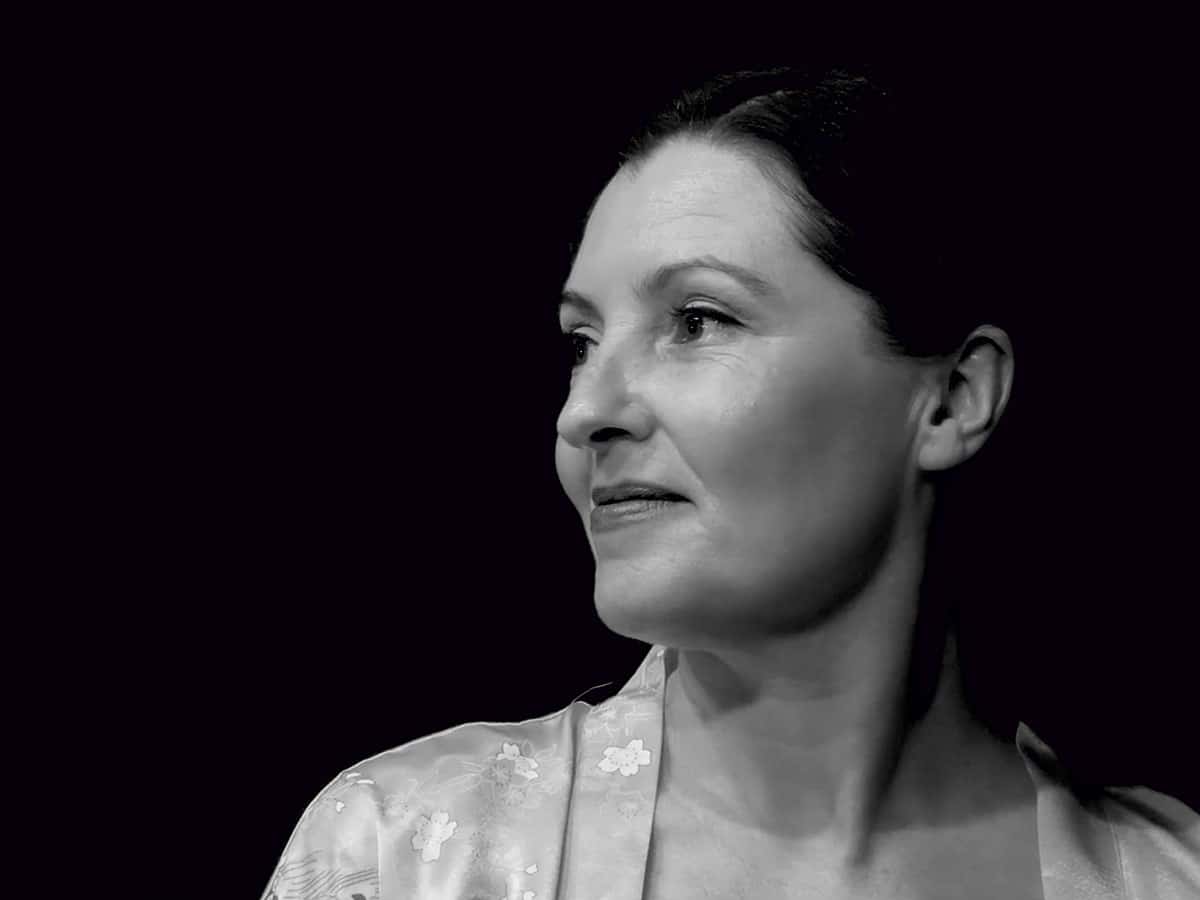James Dacey reviews El Enigma Agustina, directed by Emilio J García and Manuel González

By any measure, Agustina Ruiz Dupont had an incredible career. This Spanish theorist was Marie Curie’s star student at the Sorbonne University in Paris. She impressed Einstein at the 1930 Solvay conference (which she attended, unbeknown to most science historians), and later joined the Las Sinsombrero movement of female intellectuals in Madrid.
Driven by a passion to share her knowledge, Dupont also travelled through Spain giving musical-inspired performances under the stage name La Fotoncita de Jerez (“little photon of Jerez”). Ultimately, things took a dark turn for her, when she disappeared shortly before the Spanish Civil War. Rumour has it, she had managed to personally offend General Franco through one of her shows.
There’s just one small catch – Agustina Ruiz Dupont never actually existed.
Dupont (played by Natalia Ruiz) is the fictional character at the heart of a recent Spanish-language docufiction film El Enigma Agustina, directed by astrophysicists Manuel González and Emilio J García. She might not be real, but we’re told that pretty much everything else in the film is true. Dupont represents all the real scientists and thinkers – especially women – from the period preceding the Spanish Civil War (1936–1939) who were forgotten or erased from history. Among them is Felisa Martín Bravo, who in 1926 became the first Spanish woman to get a physics doctorate, before she was stripped of her academic functions by the Franco regime.
The bulk of the film is set in the present day, as historian Esther Vidal (played by Nerea Cordero) embarks on a PhD about the Spanish theorist Blas Cabrera, who really did attend the 1930 Solvay conference. Early in her research, Vidal catches wind of a mysterious baúl (trunk) that turned up in one of Franco’s private rooms during restoration of Madrid’s El Pardo Palace in the 1980s, following the dictator’s death. Within the trunk were Dupont’s PhD thesis (supervised by Cabrera), personal letters from Curie and Einstein, a photo of Dupont at the Solvay Conference, along with a flamenco shawl and a few other cultural items from the time.
Determined to discover more about Dupont’s life, Vidal switches the focus of her PhD to pursue the case. She recruits the science communicator Andrés García (played by Antonio Leiva) who had written a piece about the Solvay conferences. (Later, Garcia openly admits to having copy-and-pasted most of the article from Wikipedia, but this chancer attitude proves useful to the investigation.) The pair are overcome by questions: Why has nobody heard of Dupont before? Why were these items in Franco’s personal room? What happened to Dupont during the Civil War?
The rest of the film tracks the investigation – via Paris, Granada and Madrid – as Dupont’s story becomes more intriguing at every turn. Along the way, we occasionally jump to a black-and-white scene, seemingly in the 1930s, of Dupont in the dressing room of an unspecified theatre, passionately conversing with her musician cousin about her intellectual life. She talks about her friendship with Curie, her desire for a unified theory of physics, and her deep conviction to communicate scientific ideas with the Spanish public.
While the film’s plot may often seem far-fetched, it is always entertaining – you may wish to skip the next few lines to avoid spoilers. For instance, we learn that Dupont had a fling with Erwin Schrödinger, a credible plot device, given that Schrödinger was apparently a notorious womanizer. Indeed, it’s of historical record that Schrödinger (then married) took a mystery girlfriend with him to the Alps shortly before Christmas 1925, the trip where he famously crystallized the Schrödinger equation, which he published in January 1926. Yep, you guessed it: in the film, Dupont is revealed to be the girlfriend.
In terms of its theme, El Enigma Agustina reminds me of José Luis Cuerda’s 1999 film La Lengua de las Mariposas (“The butterfly’s tongue”), which also represented the Spanish nationalists’ brutal clampdown on freedom of thought during and after the Civil War. González and García, the film’s directors, are both based at the Astrophysics Institute of Andalucia (IAA-CSIC) and along with their scientific qualifications have extensive experience in communicating science. The duo’s creative approach to storytelling is unusual, and keeps the audience engaged. Indeed, I was gripped by the story and left wanting to know what happens next. Speaking at the international premiere of the film in London on 19 October 2019, the directors said they were influenced by the Spanish writer Almudena Grandes. Specifically, they were inspired by one of her stories about how progress does not always happen in straight lines.
El Enigma Agustina is timely, as Spain’s uneasy relationship with its past has been dug up once more – quite literally, as Franco’s remains were exhumed from the Valley of the Fallen monument north of Madrid and reburied in a more modest location last October. While most mainstream politicians agreed it was a necessary act, it reopened old wounds and right-wing parties made major gains at the Spanish general election in November.
Much of the Spanish Civil War period is shrouded in contested histories and partially erased information
Without drifting into a full armchair analysis, it strikes me that current tensions are fuelled by the fact that so much of the Civil War period is shrouded in contested histories and partially erased information. For example, Spanish historians are only now starting to learn about the achievements of Las Sinsombrero, the group that Dupont joins in the film. These female artists and intellectuals took their name from the act of removing their hats while passing Madrid’s Puerta del Sol, a gesture to display their freethinking attitude. Unlike their male contemporaries– including the artist Salvador Dalí and the poet Federico García Lorca – their achievements are only starting to be recognized.
A small criticism of the film is that its political leaning is not the most subtle at times. It is fascinating to learn about the ideals of the Second Spanish Republic (1931–1939), which included giving grants to more than 400 women to study science, many of whom took up positions at overseas universities. But this era is presented as a golden age for Spain, and there is no mention of the high unemployment levels and poverty linked with the global economic depression. Including this would have provided important historical context for that era, especially for a non-Spanish audience.
Ultimately, though, the film is a triumph of blending science with politics and history. The greatest praise you can give to any documentary is that it keeps you gripped throughout and leaves you craving more answers. El Enigma Agustina achieves that with gusto.
- El Enigma Agustina is now showing at various film festivals. Check out the Physics World Weekly podcast of 23 January 2020 for an interview with the director.
-
Astrophysics Institute of Andalucía (IAA-CSIC), 90 min



